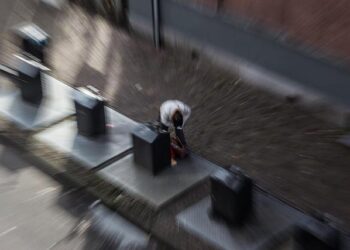Italian cinema shines a spotlight on one of its most iconic figures in the new biographical film Duse, with acclaimed actress Valeria Bruni Tedeschi stepping into the titular role under the direction of Pietro Marcello. The project offers an intimate portrayal of Eleonora Duse, Italy’s legendary stage actress known for her groundbreaking approach to theater. In an exclusive discussion with IMDb, Bruni Tedeschi and Marcello reveal how they sought to capture Duse’s fiercely independent spirit and artistic freedom, describing a woman who “went her own way freely” amid the constraints of her time. Their collaboration promises to bring a fresh, nuanced perspective to the life of a theatrical pioneer whose influence resonates to this day.
Duse Star Valeria Bruni Tedeschi Discusses Embodying Italy’s Iconic Stage Actress on Screen
Valeria Bruni Tedeschi delivers a captivating performance as Eleonora Duse, Italy’s revered stage actress whose trailblazing spirit redefined the theatrical world in the late 19th and early 20th centuries. Speaking about the complex task of embodying such a legendary figure, Bruni Tedeschi highlights the importance of capturing Duse’s fierce independence and emotional depth. “She went her own way freely,” Bruni Tedeschi explains, emphasizing how Duse’s refusal to conform to societal expectations shaped her artistry and personal life. The actress notes that portraying Duse required balancing intense vulnerability with an unyielding strength, a duality that made the role both challenging and deeply rewarding.
Director Pietro Marcello shares insights into his vision for the film, blending historical authenticity with poetic cinematic storytelling. He describes the collaboration with Bruni Tedeschi and the creative team to revive Duse’s legacy on screen through:
- Immersive period details that transport viewers to the era of Italian theatre’s golden age
- A narrative approach that highlights Duse’s pioneering influence on modern acting techniques
- Visual motifs reflecting the emotional intensity and solitude that colored Duse’s inner world
Marcello further reveals the filmmakers’ commitment to portraying Duse not just as an icon, but as a woman who relentlessly pursued her art on her own terms, making the story resonate with contemporary audiences.
| Aspect | Focus |
|---|---|
| Performance | Emotional complexity, independence |
| Direction | Historical accuracy, poetic visuals |
| Storytelling | Legacy, personal freedom |
Director Pietro Marcello Reveals Creative Vision Behind Bringing a Theatrical Legend to Life
Pietro Marcello offers an intimate exploration into the life of Italy’s theatrical icon Eleonora Duse, emphasizing a portrayal that marries historical authenticity with poetic storytelling. Marcello’s approach weaves archival footage, lush cinematography, and evocative narration to capture not just the actress’s public triumphs but also her fiercely independent spirit. The director revealed that the vision was to illustrate how Duse “went her own way freely,” breaking away from theatrical conventions of her time and embracing vulnerability on stage in a way that still resonates with modern audiences.
In collaboration with Valeria Bruni Tedeschi, who embodies Duse with nuanced depth, Marcello delves into the legend’s complex persona. The creative process involved extensive research combined with a willingness to depart from strict biographical recounting to evoke emotional truths. The production highlighted several key elements:
- Emphasis on Duse’s intimate letters and personal reflections
- Use of natural landscapes to mirror the actress’s inner turmoil
- Integration of theatrical motifs alongside cinematic innovation
This multidimensional approach not only pays homage to Duse’s artistry but also reinvents her story for a contemporary audience hungry for biographical dramas rooted in emotional authenticity.
| Creative Element | Purpose |
|---|---|
| Archival Footage | To ground the narrative in historical reality |
| Natural Landscapes | Symbolize emotional depth |
| Letters & Personal Writings | Reveal intimate thoughts and motivations |
Overall, this multidimensional approach reinvents a historical figure for contemporary audiences by merging theatrical motifs with cinematic innovation. If you’d like, I can help you summarize, analyze, or transform this content further!
Insights into Capturing Historical Authenticity and Recommendations for Portraying Complex Characters
To recreate the essence of Italy’s legendary stage actress, director Pietro Marcello and star Valeria Bruni Tedeschi embraced a methodology that fused archival research with inventive cinematic techniques. Marcello emphasized the importance of capturing not just the historical accuracy of her era but the intangible spirit that defined her presence both on and off the stage. This approach involved studying original playbills, personal letters, and early film footage, which allowed the team to build a textured portrait of their subject’s world. In doing so, they sought to avoid a static biopic and instead aimed to evoke an emotional snapshot that conveys the actress’s restless energy and groundbreaking boldness.
Bruni Tedeschi brought complexity to the role by delving into the actress’s contradictions-her fierce independence alongside her vulnerability. She highlighted several key recommendations for portraying multi-dimensional characters effectively:
- Embrace ambiguity: Avoid simplistic dichotomies; real people live within nuance.
- Balance historical context with personal psychology: Understand the subject’s environment while exploring their inner turmoil.
- Allow space for silences and subtext: Sometimes what remains unsaid reveals more.
This philosophy allowed Bruni Tedeschi to inhabit a performer who “went her own way freely,” transcending the era’s constraints, and offering audiences a vivid window into a complex, fiercely original artistic soul.
In Retrospect
As “Duse” makes its way to audiences, Valeria Bruni Tedeschi and Pietro Marcello’s collaboration stands as a testament to the enduring legacy of Italy’s iconic stage actress. Through their nuanced portrayal, they invite viewers to rediscover Eleonora Duse not just as a theatrical legend, but as a fiercely independent woman who carved her own path. This film not only honors her artistry but also underscores the timeless relevance of her story in today’s cultural landscape.















